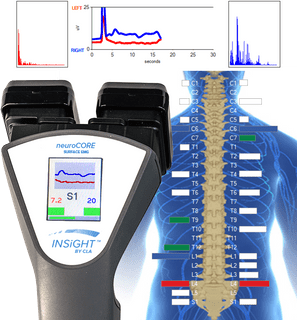Anatomy of a Muscle Spasm
This month’s blog has been inspired by a good number of my beloved patients who (for lack of a better term) were “locked up” in a bad way this week. First, I hate seeing anyone is so much discomfort that they can’t move and second, I wanted to geek out a little bit as to “why” this can happen. That’s a question I get a lot, especially when one is in the thick of it.
A muscle spasm, also known as a “Charley horse” or muscle cramp, refers to the involuntary and forceful contraction of a muscle, most commonly in the thighs, calves, feet, hands, and arms. They can also occur in the abdomen or along the rib cage and of course in your neck and low back…hello here’s where I come in. Muscle spasms are typically harmless, but they may result in an inability to use the affected muscle for a short period of time. Haven’t we all been here at one point or another?
Without overwhelming you guys with anatomy and physiology, I do want to point out that muscles cannot do anything without a nerve command/supply. In the case of muscle spasm, I’m specifically talking about a motor neuron and its innervation to skeletal muscle. The motor neurons that innervate skeletal muscle fibers are called alpha motor neurons as a FYI. As the alpha motor neuron enters a muscle, it divides into several branches, each innervating a muscle fiber. One alpha motor neuron along with all of the muscle fibers it innervates is a motor unit. The size of the motor unit correlates with the function of the muscle. That’s as deep as we are getting today.
(Here’s a visual for you guys.)
I do want to point out that I do measure how well your motor nerves are working in my practice with sEMG scans. As you now know motor nerves control the movement of muscles and your posture. The Surface Electromyography (sEMG) scans can show disturbances to the motor system. The sEMG reads the amount of electrical current in your muscles to determine how well your motor nerves are functioning and if they are symmetrical. This is extremely important because the vertebrae in the spine depend on the muscles to move properly. Structural shifts (misalignments in the spine) disturb nerve function and cause an abnormal amount of electrical current to flow to your muscles. This leads to muscles becoming weaker or stronger, tighter or fatigued on one side of the spine compared to the other. These are indicated by colors or abnormal patterns in the scan. Clearly this can reveal where you might be more susceptible to spasm. It’s a great tool for a good baseline before improvements are made with chiropractic care, physical therapy or other beneficial lifestyle changes.
Now, back to spasm. What causes a muscle spasm can be harder to answer but there are several causes I’ll mention. Most commonly, what sets one off can include:
- a lack of nutrients/dehydration
- muscular tension
- overuse of the muscle
- improper muscle activation
- increased demand of blood flow
- various underlying medical conditions.
Dehydration and imbalances of electrolytes (e.g., sodium, calcium, potassium, magnesium) can prevent muscle cells from receiving a necessary nutrient supply, causing them to become more prone to spastic and random contractions.
Spasms due to muscular tension or overuse are typically experienced when holding a certain position for too long (hello to my patient who slept on their stomach the wrong way and couldn’t move their neck upon waking). Similarly, strenuous exercise can cause muscular tension and lead to an increased demand for blood flow to the muscles. If the body cannot meet the demands of the muscle cells, muscle spasms can result. The risk of muscle cramps also increases with age, excess body weight, and pregnancy. However, in many cases, the exact cause of a muscle spasm may be unknown, which makes “why does this happen” hard to answer.
While most spasms are typically harmless, they may be tied to an underlying medical condition which can be more serious. Some of these other underlying conditions include: Arteriosclerosis, spinal cord compression, nerve compression, herniated disc, scoliosis, spondylolisthesis, multiple sclerosis and ALS.
Treating a muscle spasm can also be a collage of various different options:
- Heat & ice
- Topical analgesics: Hyperice, Deep blue, tiger balm, CBD etc.
- Supplements: magnesium, CBD
- Movement: stretching and exercise
- OTC meds
- Muscle relaxers
- Massage
- Chiropractic: duh
- Physical therapy: I know the best in town! Dr. Kyle at Renegade Movement and Performance is the man and my personal PT. (The experience you get in my practice is exactly how they treat their patients. No “in and out” factory style care here either.)
One thing is for certain, if you’re suffering with a really bad spasm, we need to minimize it before we can mobilize the spine. Surely when they are bad enough, they can cause some changes to the spinal joints they are attached to. If you find to cramp up frequently, it could be as easy as increasing your water and taking a supplement. If you need more detailed specific care to maximizing your performance and recovery, please go see my man Kyle…they are literally the best. I’ve got your back and he’s got your muscles lol.


